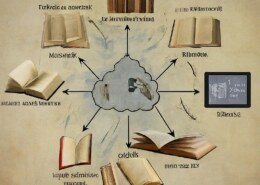Magic realism, a literary genre in Latin America, emerged in mid 20th century as a response to political and social realities. It is often believed that magic realism, as the definition suggests that it allows the authors to explore complex themes and ideas and put it in a way that is harder to undeRead more
Magic realism, a literary genre in Latin America, emerged in mid 20th century as a response to political and social realities.
It is often believed that magic realism, as the definition suggests that it allows the authors to explore complex themes and ideas and put it in a way that is harder to understand. Magic realism blurs the boundaries between reality and fantasy in literature as it puts fantastical elements into everyday life, challenging readers to question their preconceived notions of what is possible. This blurring of boundaries sparks imagination and prompts deeper reflection on reality. The use of magical realism expands readers’ horizons and invites a broader understanding of the world, encouraging them to question their own perceptions and explore the world beyond their perceptions.
Moreover, combining fantasy and magical realism allows authors to explore complex cultural and societal issues like race, gender, and class in a thought-provoking and entertaining manner. This approach fosters empathy and understanding, challenges societal norms, and sparks important conversations that may not be possible in a strictly realistic setting.
Magical realism serves as a mirror reflecting cultural nuances and diverse perspectives. It becomes a vehicle for cross-cultural understanding as authors incorporate their heritage into the narrative, providing readers with a glimpse into different worlds.Additionally, the genre has faced controversies surrounding cultural appropriation, as it often draws inspiration from marginalized cultures. Despite these debates, magical realism continues to thrive and evolve, captivating audiences with its unique blend of the fantastical and the everyday.
See less


Nostalgia as a Source of Comfort - Connection to the Past: Provides a sense of continuity and identity. - Idealized Memories: Highlights positive experiences and simpler times. - Emotional Grounding: Offers stability and reassurance amidst present uncertainties. - Refuge from Present Troubles: ActsRead more
Nostalgia as a Source of Comfort
– Connection to the Past: Provides a sense of continuity and identity.
– Idealized Memories: Highlights positive experiences and simpler times.
– Emotional Grounding: Offers stability and reassurance amidst present uncertainties.
– Refuge from Present Troubles: Acts as a soothing reminder of roots and happy moments.
Nostalgia as a Source of Discomfort
– Sense of Loss: Evokes feelings of loss and melancholy for an irretrievable past.
– Idealization vs. Reality: Creates tension between idealized memories and the current reality.
– Alienation: Intensifies dissatisfaction and alienation from the present.
– Conflict and Turmoil: Drives internal conflict and emotional struggle as characters grapple with unattainable longings.
Overall Impact on Literature
– Complex Emotional Spectrum: Balances comfort with the bittersweet pain of longing.
See less– Enriched Narratives: Adds depth to character development and plot.
– Relatability and Poignancy: Captures the universal human experience of time’s passage, making stories more relatable and emotionally resonant for readers.